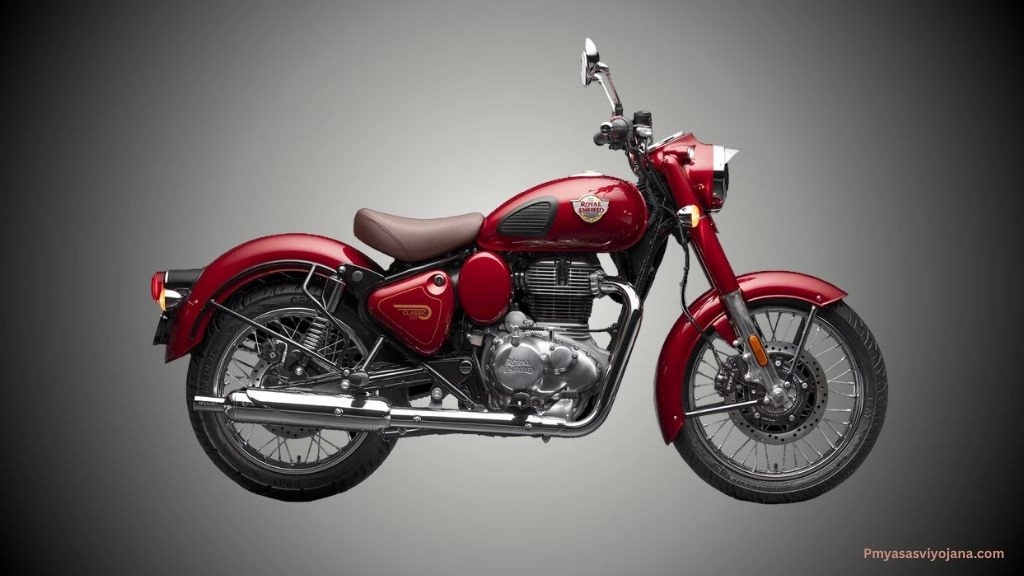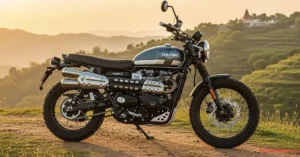Are you searching for a motorcycle that blends iconic style, wallet-friendly running costs, and everyday comfort? I’ve been there. As someone who has logged thousands of kilometers on various Royal Enfield 350s—rain or shine, highways and city streets—I know the questions riders ask before picking the Classic 350. My own choice came down to its old-school looks, simple mechanics, and the promise of affordable ownership. Over the years, what I’ve learned (and what you’ll discover here) is that the Classic 350 isn’t just about nostalgia—it’s about the real-world value it gives riders of all ages.
In this article, I’ll break down what truly makes the Classic 350 unique, why its practical benefits matter wherever you ride, deliver a clear mileage and performance review, and share a must-know tip that could improve your comfort and save you money. This is the honest, rider-tested perspective you won’t find in a brochure.
Let’s Break It Down: What is the Royal Enfield Classic 350 Really?
Think of the Royal Enfield Classic 350 like a sturdy old-school wristwatch—timeless, dependable, and always ready, even as the world around it goes digital. It’s not just an “old man’s bike” or a two-wheeled relic. Here’s why:
- Engine Size and Power: The heart is a 349cc single-cylinder, air/oil-cooled engine. It delivers 20.2 bhp at 6100 rpm and a healthy 27 Nm of torque at 4000 rpm. Translation: enough grunt for fun city riding and relaxed highway cruises.
- Riding Posture and Weight: The upright, classic riding position keeps your back happy. At around 195 kg, it sounds heavy, but the low seat height (31.7 inches) and balanced frame mean it’s surprisingly easy to manage, even for newer riders.
- Old-School Charm with New Tricks: You get retro styling—chrome, metal, and all the right curves—mixed with modern touches like electronic fuel injection (EFI), LED lights, a USB charging port, and a combo analog-LCD dash. It feels nostalgic without making you give up on comfort or reliability.
- Common Misconceptions: While many think the Classic is “just for older folks,” I’ve seen more young riders than ever choosing it for its style, ease of use, and solid road presence. It’s a bike you ride because you want to, not because you have to.
The ‘Why’: Real-World Benefits for Everyday Riders

The Classic 350’s looks turn heads, but it’s the useful updates that really count. The addition of EFI means no more cold morning kick-start battles. The new LED headlamp lights up dark roads better than past models. USB charging keeps your phone alive on long trips, and the Tripper navigation pod (on some variants) makes finding your way a breeze. It doesn’t matter if you’re 25 or 55; these features make the Classic 350 relevant for everyone.
Riding Comfort and Everyday Handling
I’ve spent hours in the saddle—trust me, comfort matters. The wide, padded seat, combined with upright handlebars and responsive suspension, means less fatigue even after a long day. The weight might feel intimidating at first, but once moving, it feels planted without being unwieldy. Filtering through city traffic or cruising country roads, you always feel in control.
Key comfort features:
- 41mm telescopic front forks and twin rear shocks (with 6-step preload adjustment)
- Wide, plush seat (good for both rider and pillion)
- Low, easy-to-reach foot pegs and controls
Fuel Efficiency and Cost of Ownership
Let’s talk numbers. Real riders, including myself, report:
- City mileage: 25-28 km/l (depends on traffic and throttle)
- Highway mileage: 32-35 km/l (steady cruising makes a big difference)
- Tank size: 13 liters, so expect 300-400 km between fill-ups
Service costs are refreshingly low. Basic annual service averages around ₹2,000-₹2,500. Spare parts are easy to source, and many maintenance jobs (like oil changes and adjusting the chain) can be done at home with a little know-how. All this means you get big-bike style without big-bike expenses.
Reliability and Daily Usability
The Classic 350 stands out for its straightforward, reliable engine. Owners rarely face surprises. Yes, you may notice things like a slightly spongy front brake feel or minor electrical quirks (indicator bulbs, mostly), but these are easy fixes. The simplicity of the bike is its strength—less tech means less to go wrong. For most, it’s a daily workhorse that rarely lets you down.
What to expect:
- Minimal breakdowns if maintained regularly
- Occasional minor issues (nothing that leaves you stranded)
- Excellent dealer network and community support
A Step-by-Step Guide to Getting the Best Performance and Mileage (Safely)
Safety comes first—regular checks are non-negotiable. Here’s how you can get the most from your Classic 350, without risking reliability or safety:
- Check Tire Pressure Weekly: Underinflated tires drop mileage and handling. Stick to manufacturer specs.
- Keep Service Intervals: Stick to the schedule in your owner’s manual. Missed oil changes or filter swaps mean lower efficiency and possible engine issues.
- Use Good Quality Fuel: Avoid sketchy pumps. Clean fuel keeps the engine running smooth.
- Gentle Throttle, Smooth Shifts: Sudden acceleration burns more fuel. Smooth riding helps both mileage and the lifespan of your clutch and gearbox.
- Maintain Proper Chain Slack: A tight or loose chain kills performance and can be dangerous.
- Monitor Brake Pads and Fluid: Sticky or dragging brakes increase fuel consumption.
- Lighten Your Load: Extra weight means more work for the engine. Keep the luggage light.
For official service guidelines, always refer to the manufacturer’s handbook or [Royal Enfield’s official maintenance portal].
The Pro Tip Most People Miss: Unlocking Maximum Comfort and Savings
Here’s something even many mechanics overlook: adjusting your rear shock preload and keeping your chain perfectly lubricated and tensioned.
Why does it matter?
A properly set rear suspension (not too soft, not too stiff) changes how bumps and potholes feel, directly reducing fatigue and improving control. Likewise, a well-lubricated, correctly tensioned chain not only lasts longer but noticeably boosts mileage and throttle response.
How to do it:
- Set the shock preload according to your weight and typical load (rider + luggage + pillion).
- Lubricate and check chain slack every 500 km, adjusting as needed.
From my own rides, these two small tweaks make the Classic 350 feel smoother, more responsive, and cheaper to own in the long run.
Conclusion
If you want a motorcycle that delivers more than just numbers on a spec sheet, the Classic 350 should be at the top of your list. It mixes honest, real-world mileage with classic looks and running costs that won’t keep you up at night. My journey with the Classic 350 has shown me you don’t need to choose between style, comfort, and practicality. You can have all three.
Disclaimer:
I am a blogger with extensive personal experience, not a certified mechanic. The advice in this guide is based on firsthand riding and community feedback. For major maintenance or upgrades, always consult with a professional technician or authorized Royal Enfield service center. Your safety comes first.






